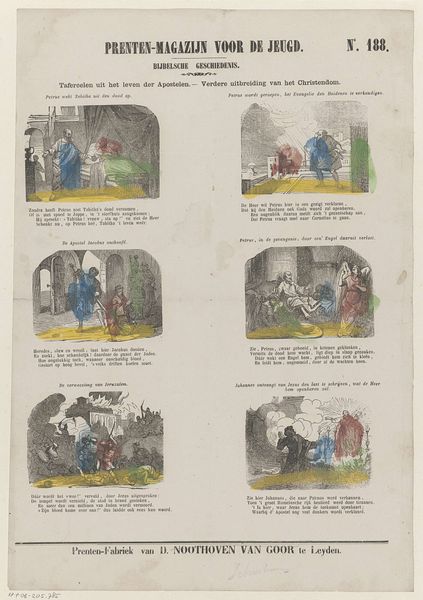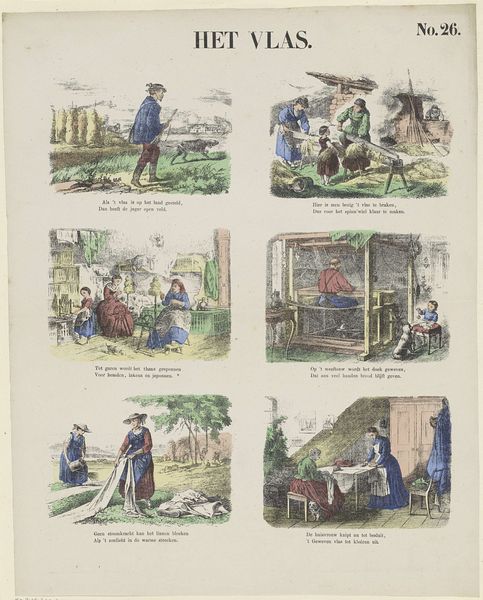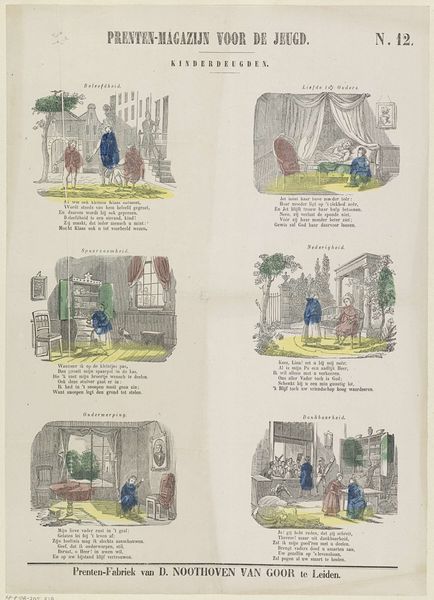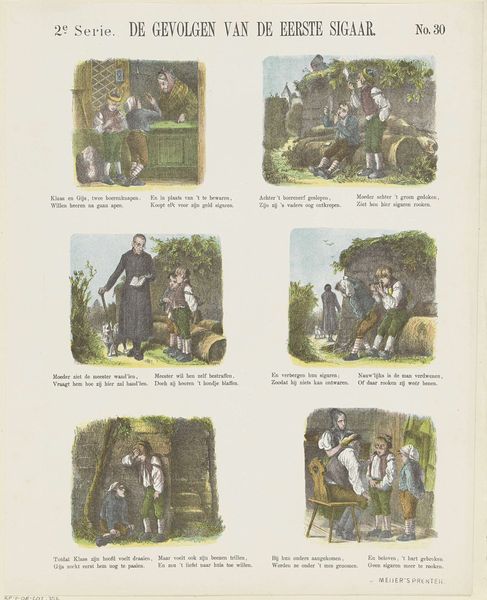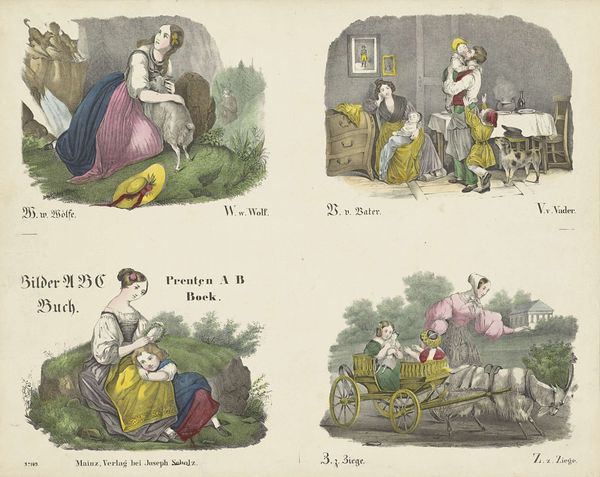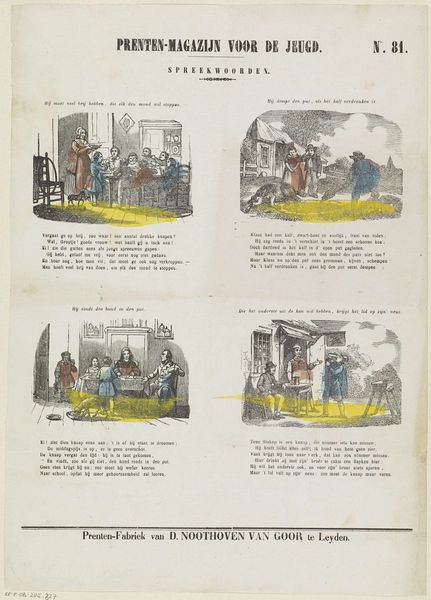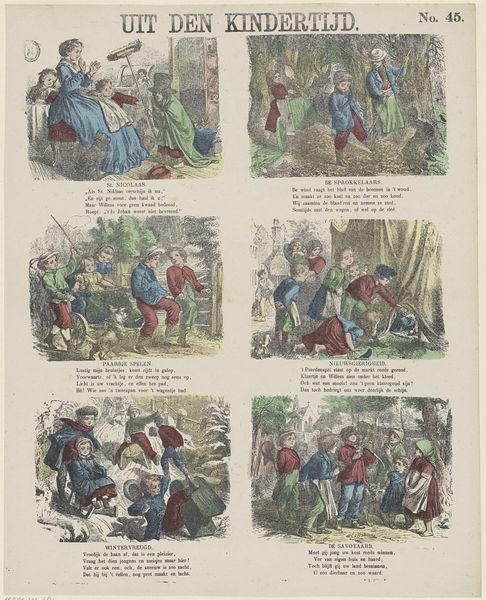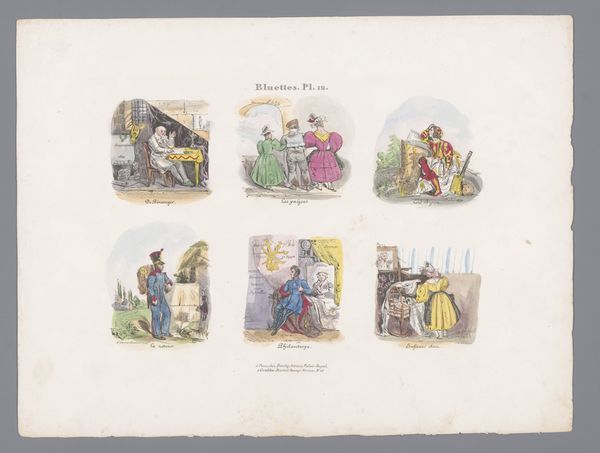
Dimensions: height 429 mm, width 345 mm
Copyright: Rijks Museum: Open Domain
Editor: So, this is "De kleinen en hun vriendjes," or "The Little Ones and Their Friends," from 1874, printed by De Ruyter & Meijer. It's a print with watercolor, showing four different scenes of children interacting with animals. It feels so idyllic, almost unrealistically innocent. What jumps out at you? Curator: The visual arrangement itself speaks to a very specific 19th-century construction of childhood, doesn’t it? Consider the title and how it frames the child’s relationship to the natural world. It positions animals almost as extensions of the children's own innocence, obscuring power dynamics, where the child clearly holds a dominant position, that echoes similar colonialist narratives of dominating nature. Do you notice that tension here? Editor: I see what you mean. I was caught up in the surface-level charm of the imagery, but thinking about it critically, it’s interesting how it presents a very curated view of that time, and a pretty skewed view on the interactions between the child and the environment. Curator: Precisely! We need to challenge the presumed naturalness of this kind of imagery and ask whose interests are being served by these narratives. Romanticism idealised nature, frequently eliding social and economic realities, reflecting how this romanticism, if unchallenged, helped uphold the status quo and reinforced specific class positions and perhaps obfuscate colonial domination. Editor: So it is an image deeply invested in its time period and carries heavy implications. Curator: Yes, understanding the context gives us the means to unpack those embedded power dynamics. Looking at it with fresh eyes, what are your new thoughts? Editor: I now see this image as a potent expression of Romantic ideology. By recognizing those constructed ideas, the visual becomes less an innocent reflection of its time, and more an explicit endorsement of it. I've learned so much! Curator: Indeed, and art serves as a powerful portal into cultural understanding and self-reflection.
Comments
No comments
Be the first to comment and join the conversation on the ultimate creative platform.




